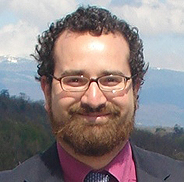Platform
Civil Peace Service: a European commitment to non-violent conflict resolution

Rubén Campos
Ideas for the creation of a Civil Peace Service (CPS) with the support of government bodies have emerged in the European Union and in various states since the 1990s. The idea has been developed with some variations in various European countries, but it has always had the common goal of improving civil society's ability to intervene in violent international conflicts and construct opportunities for peace.
The CPS are the heirs to the new paradigm of the policy of non-violence that Gandhi developed in India and South Africa in the early 20th century, which created the possibility of building a new repertoire of action for mass social and political action. Its spread across the movements for change in the entire world, from the second half of the 20th century onwards, has placed the policy of non-violence in humanity's collective cultural memory.
The origins of intervention by civilians in violent conflicts can be found in the development from the mid-19th century onwards of the humanitarian dimension of international law, with the creation of international regulations and organisations such as the International Committee of the Red Crossa (CICR) in Geneva in 1863.
In this same area, in 1919, a group of European Christian pacifists led by Pierre Ceresole promoted the creation of a civil service instead of compulsory military service, which led to the creation of the International Civil Servicel, which aimed to achieve participation by volunteers from all over the world in reconstruction work in areas devastated by war or humanitarian disasters.
A major step forward in the need to become more directly involved in conflict resolution work, and not only in humanitarian intervention in them, was Gandhi's proposal to create a Shanti Sena (Peace Army), a body of volunteers using the same non-violent techniques that he was developing for the struggle for independence in work on construction of peace in conflicts.
The example of the Shanti Sena has been subsequently followed and reproduced by organisations in civil society all over the world. Some outstanding examples of this type of initiative are the International Peace Brigades and the Non-violent Peace Forces.
At country level, this civilian and non-violent aspect of the construction of peace started to become more important in the 1990s, with the emergence of a new vision of human security and the prevention of conflicts, featuring non-military dimensions of security and a more active role for civilians. For example, in Europe, crisis management within the European Security and Defence Policy now includes the call for greater influence by civilians.
At the same time as this redefinition of security policies and plans for the creation of international civil bodies for peace, the CPS, as developed in various European countries, are defined as initiatives for intervention in long-term conflicts headed by civil society and supported and coordinated by public authorities, which work on the transformation of conflicts using non-violent means, and the objective of which is to reduce violence.
Social organisations and other governmental bodies working to train and send unarmed civilians to intervene in violent conflicts have existed for some time, and have accumulated extensive experience and recognised effectiveness, and their work has been facilitated with the creation of a policy instrument of this type.
Networks of organisations in European civil society involved in the construction of peace such as the European Network for Civil Peace Services or the European Peace Liaison Office have been established to defend the need to create these CPS institutionally at a European level, which in their opinion would lead to an improvement of the image and the inefficiency of the EU as a global agent for the construction of peace.
The idea has been developed with some variations in various European countries, but it has always had the common goal of improving civil society's capacity to intervene and construct opportunities for peace in violent international conflicts. The Civil Service for Peace in Germany (Ziviler Friedensdienst), has become the leading model in this field.
The projects of the German CPS are planned and executed as long-term interventions in the context of violent, active or latent conflicts between social groups in a country or region or in the form of a contribution to the prevention of those conflicts. The projects are undertaken in each of the three phases of a conflict, i.e. in prevention, transformation and post-conflict activities.
Their general objective is to reduce or prevent violence, promote understanding and contribute to a lasting and just peace, in cooperation and with the leadership of counterpart local organisations. The German CPS has received 116.8 million euros in the last ten years. More than 200 consultants are currently working on projects in 50 countries, with support from around 300 local professionals.
There are plans to implement CPS in many states and regions all over Europe, using the model and the results and in fact achieved in Germany. The idea of a Catalan Civil Peace Service, promoted by organisations in civil society and which is supported by part of the Catalan political class, will have a pioneering role in the development of this aspect of the construction of peace.
The Catalan tradition of managing diversity based on peaceful resolution of conflicts and the establishment of a culture of peace make Catalonia a privileged space to implement this initiative, which continues to build on the old dream of generations of workers for peace of a world in which conflicts can be solved with no need to resort to violence.